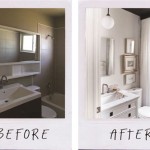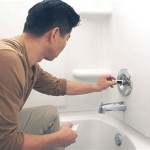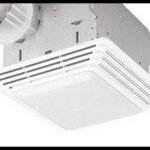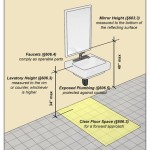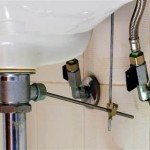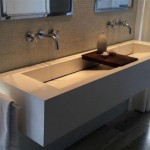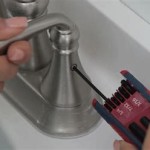Vintage Bathroom Sink Taps: A Timeless Elegance for Modern Homes
Vintage bathroom sink taps offer a unique blend of historical charm and modern functionality. These fixtures, often sourced from antique shops, salvage yards, or reproduction specialists, can significantly enhance the aesthetic appeal of a bathroom, transforming it into a space that evokes a sense of nostalgia and sophistication. Understanding the nuances of vintage taps, including their various styles, materials, restoration techniques, and plumbing considerations, is crucial for successfully incorporating them into a contemporary bathroom design.
The allure of vintage bathroom sink taps lies in their distinctive designs and craftsmanship. Unlike the sleek, minimalist styles prevalent in modern fixtures, vintage taps often feature intricate detailing, ornate handles, and robust construction. This attention to detail reflects a bygone era when craftsmanship was highly valued and products were built to last. Consequently, opting for vintage taps is often perceived as a sustainable choice, promoting the reuse of existing materials and reducing the demand for newly manufactured products.
Before embarking on the journey of acquiring and installing vintage bathroom sink taps, careful consideration must be given to several factors. This includes assessing the existing plumbing infrastructure, understanding the available styles and materials, and being prepared for the potential challenges associated with restoring and maintaining these older fixtures.
Identifying and Sourcing Authentic Vintage Taps
The market for vintage bathroom sink taps is diverse, ranging from genuine antique pieces to carefully crafted reproductions. Distinguishing between the two requires a keen eye and a basic understanding of the characteristics associated with different periods. Authentic vintage taps often exhibit signs of wear and tear, such as minor scratches, slight discoloration, or patina. These imperfections, rather than detracting from their value, often contribute to their unique character and authenticity.
Common locations for sourcing vintage taps include antique shops, architectural salvage yards, online auction sites, and estate sales. When browsing these sources, it is essential to carefully examine the taps for any signs of damage, such as cracks, corrosion, or missing parts. In addition, it is recommended to inquire about the tap's history and provenance, if available. This information can provide valuable insights into the tap's age, origin, and potential value.
Reproduction taps, on the other hand, are designed to mimic the appearance of vintage fixtures but are manufactured using modern materials and techniques. While reproductions may lack the historical authenticity of genuine vintage taps, they offer several advantages, including guaranteed functionality, readily available replacement parts, and compatibility with modern plumbing systems. For those seeking the aesthetic appeal of vintage taps without the potential challenges associated with restoring older fixtures, reproductions can be a viable option.
The materials used in vintage bathroom sink taps vary depending on the period of manufacture. Common materials include brass, chrome, nickel, and porcelain. Brass was a popular choice for its durability and resistance to corrosion, while chrome and nickel provided a sleek, polished finish. Porcelain was often used for handles and decorative accents, adding a touch of elegance to the overall design.
When selecting vintage taps, it is crucial to consider the overall style and aesthetic of the bathroom. Different styles of vintage taps, such as Victorian, Art Deco, and Mid-Century Modern, can evoke distinct moods and complement various design themes. Victorian taps, for example, are characterized by their ornate detailing, intricate curves, and historical charm. Art Deco taps, on the other hand, feature geometric shapes, streamlined designs, and a sense of modernity. Mid-Century Modern taps often showcase clean lines, minimalist forms, and a focus on functionality.
Restoration and Refurbishment Techniques
Vintage bathroom sink taps often require restoration or refurbishment to ensure their functionality and aesthetic appeal. The restoration process can range from simple cleaning and polishing to more complex repairs, such as replacing worn-out washers, reseating valve seats, or re-plating damaged surfaces. Before attempting any restoration work, it is advisable to consult with a qualified plumber or restoration specialist to assess the condition of the taps and determine the appropriate course of action.
Cleaning and polishing are essential steps in restoring vintage taps. Mild soap and water can be used to remove surface dirt and grime. For more stubborn stains, a specialized metal cleaner or polish may be necessary. It is important to avoid using abrasive cleaners or scouring pads, as these can damage the finish of the taps.
Replacing worn-out washers and O-rings is a common repair that can improve the functionality of vintage taps. These components tend to deteriorate over time, leading to leaks and drips. Replacement washers and O-rings are typically available at hardware stores or plumbing supply shops. When replacing these components, it is crucial to ensure that they are the correct size and type for the specific tap model.
Reseating valve seats involves repairing or replacing the surface against which the tap's valve closes. Over time, valve seats can become corroded or damaged, leading to leaks. Reseating valve seats requires specialized tools and techniques and is best left to a qualified plumber. In some cases, it may be necessary to replace the entire valve seat assembly.
Re-plating damaged surfaces is a more complex restoration technique that involves applying a new layer of metal plating to the taps. This process can restore the original luster and appearance of the taps, but it requires specialized equipment and expertise. Re-plating is typically performed by professional metal finishing shops.
Plumbing Considerations and Installation
Installing vintage bathroom sink taps in a modern bathroom requires careful consideration of several plumbing factors. One of the primary concerns is compatibility with existing plumbing systems. Vintage taps may have different thread sizes or connection types than modern fixtures. In some cases, it may be necessary to adapt the plumbing to accommodate the vintage taps.
Another consideration is water pressure. Vintage taps may not be designed to handle the high water pressure common in modern plumbing systems. Installing a pressure-reducing valve can help to prevent damage to the taps and ensure proper functionality.
The installation process for vintage bathroom sink taps is generally similar to that of modern taps. However, it is crucial to follow the manufacturer's instructions carefully and to ensure that all connections are properly tightened to prevent leaks. It is also recommended to use Teflon tape or pipe sealant on all threaded connections.
In many jurisdictions, plumbing work requires a permit and must be performed by a licensed plumber. Before installing vintage bathroom sink taps, it is advisable to check with local authorities to determine the applicable regulations and requirements. Hiring a qualified plumber can ensure that the installation is performed safely and correctly and that it complies with all relevant codes.
Maintaining vintage bathroom sink taps requires regular cleaning and inspection. Periodically checking for leaks and drips can help to prevent water damage and conserve water. Promptly addressing any issues that arise can extend the lifespan of the taps and preserve their aesthetic appeal. Applying a protective coating of wax or sealant can help to prevent corrosion and maintain the finish of the taps.
The integration of vintage bathroom sink taps into a modern bathroom can be a rewarding endeavor, resulting in a space that seamlessly blends historical charm with contemporary functionality. By carefully considering the various factors involved, from sourcing and restoration to plumbing and maintenance, homeowners can successfully incorporate these timeless fixtures into their homes and create a bathroom that reflects their unique style and appreciation for the past.
Ultimately, the decision to incorporate vintage bathroom sink taps into a modern bathroom is a personal one. However, the potential benefits, including enhanced aesthetic appeal, sustainable practices, and a connection to history, make it a compelling option for those seeking to create a truly unique and memorable space.

Tat2 Vintage Series Basin Cold Tap Tuscani Italy Pte Ltd

Vintage Style Mixer Tap Faucet Bathroom Kitchen Basin Sink Singapore
New Style Bathroom Golden Chrome Black Basin Faucet Vintage Kitchen Sink Tap Brass Mixer Water Zd002 Ee Singapore

Inchant Vintage Chrome Swan Monobloc Basin Taps Single Hole Double Handles Bath Mixer Tap Antique Furniture Home Living Bathroom Kitchen Fixtures On Carou

Antique Brass Vintage Single Lever One Hole Bathroom Basin Faucet Sink Mixer Tap

Wine Glass Style Single Lever Waterfall Bathroom Basin Faucet Brass Antique Hot And Cold Sink Mixer Taps Lazada Singapore

Vintage Bathroom Sink Faucets Best In Singapore Nov 2024 Lazada Sg

9 Antique Brass Faucet Bamboo Faucets Crane Bathroom Sink Basin Mixer Tap 9033a Vintage

Vintage Bathroom Sink Faucets Best In Singapore Nov 2024 Lazada Sg

Classic Vintage Broe Bamboo Shape Copper Hot Cold Water Taps Single Handle Wash Basin Bathroom Antique Brass Faucet China Mixer Made In Com
Related Posts
